Fighting thrips on indoor plants, using safe methods
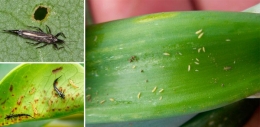
Thrips - These are small dark-colored bugs. Their sizes, depending on the type, may vary, but most often they reach 1-2 mm in length. Small pests are known to many gardeners because untimely control of them can lead to the death of the plant.
Content:
- What harm do they do?
- Types of thrips
- By what signs can one suspect the appearance
- How to spot them on houseplants
- Methods of disposal in an apartment
- Folk remedies for pests
- How to avoid appearing
What harm do they do?
Thrips are insects small sizes that affect indoor and garden plants. If you do not notice their appearance in time, they can lead to the death of the flower.
Insects are different:
- Short body length;
- Short running legs with a bubble-like growth at the base of each;
- The abdomen is composed of eleven segments;
- The wings are distinguished by the presence of two or three veins. The edges are bordered with long fringe;
- The larvae are light, beige or gray in color;
- The development process consists of egg, larval, imago and adult stages.
In the process of development, the following may have an impact:
- During the process of reproduction and development, especially at the larval stage, insects feed on sap plants. As a result of this, marks of cuts appear on the surface of the leaves and stems, which deform parts of the flower;
- Viral and fungal diseases can be transmitted through bites, which weaken the plant, and in some cases, even lead to its death.
- In the process of feeding, insects not only mechanically destroy the structure of leaves and stems, but also disrupt the process of photosynthesis. This slowdown can cause the flower to wilt and dry out.
Kinds
It is difficult to accurately determine what species an insect belongs to due to its small size. In addition, in nature there are both species that feed on plants and predatory ones.
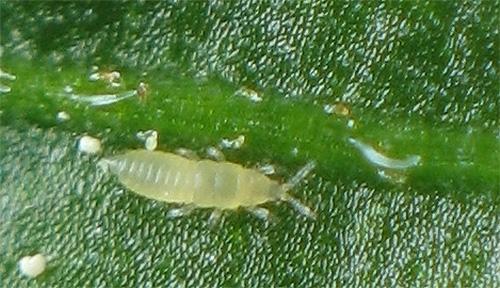
The most common species include thrips:
- Multivorous - a brown insect, 1 mm long. A characteristic pest of many indoor and decorative plants, which causes serious damage not only to leaves, but also to flowers and ovaries;
- Bulbous is the most common type in the country. Color – brown, dark, size – up to 2 mm. Dangerous for all lilies because it affects the bulbs;
- Californian is a typical greenhouse pest native to the tropics. Particularly dangerous for fruits, vegetables, berries and decorative ones;
- Tobacco thrips is one of the smallest species of thrips, less than 1 cm. Sexual dimorphism is clearly visible: females are yellowish, light-colored, males are dark brown. Characteristic for warm regions and greenhouses. Poses a threat to many flowering and vegetable crops;
- Rosen - like Tobacco, the size does not exceed 1 mm. The color is brownish. Affects flowers and leaves of Rosaceae. It affects both indoor and garden crops.
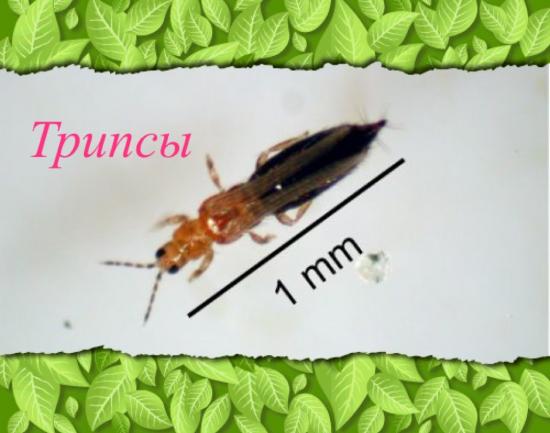
In nature there are many different species of these insects. However, first of all, gardeners should be concerned with the question: thrips - how to get rid of them? Without appropriate measures, a flower affected by any type of pest may die.
By what signs can one suspect the appearance
It is very difficult to determine a thrips infestation at first, since the insects are secretive and can immediately attack not all plants, but only one.
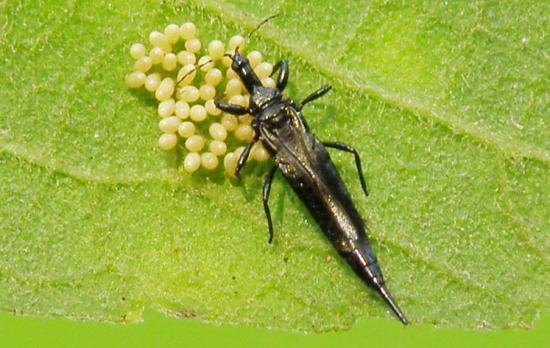
However, there are a number of signs by which one can suspect a lesion:
- The presence of small punctures, cuts on the stems and leaves ;
- Discoloration of foliage;
- The appearance of brown or white spots on the back side leaf;
- Withering, drying and falling off of leaves;
- Abnormal external changes in stems, buds and flowers.
The main signs of the life of thrips are quite unambiguous, but they can only be noticed by careful examination of the leaves. In addition, the last sign of presence is sticky discharge and black lumps on foliage - waste products of parasites.
How to detect them on indoor crops
The first signs of damage are the same for both garden and indoor crops.
These include:
- bite marks,
- leaf discoloration,
- spots and sticky marks on leaves.
If the control of thrips on indoor plants is not carried out in a timely manner, the leaves will die. In addition, insect secretions can provoke the development of sooty fungus.
These insects are practically omnivorous, but are most often found on Rosaceae, violets, orchids and begonias.
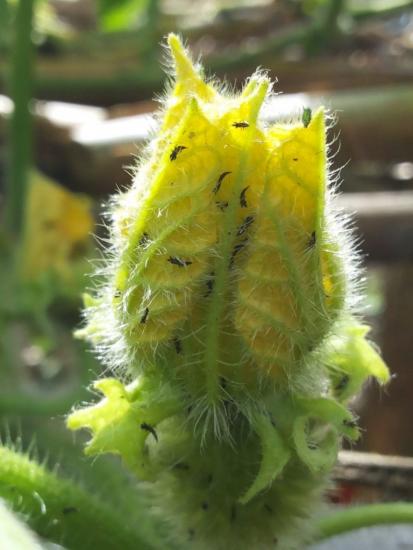
The most dangerous insects for fleshy stems violets. If damage by these pests is detected, it is recommended to immediately remove the flowering parts and spray with suitable preparations for one and a half months.
Methods of disposal in an apartment
The appearance of these pests frightens gardeners, but they can be dealt with if you know what methods to use to combat the problem.Fighting methods can be varied.
Some radical chemicals include:
- Agravertine is an insecticide, 10 ml of which should be mixed in a liter of water and sprayed on the flower. After this procedure, the plant needs to be covered with a bag for a day. After this, the leaves should be washed under a warm shower;
- Fitoverm is an effective insecticide; the nature of its effect and rules of application are similar to Agravertin;
- Spintor is an insecticide based on natural ingredients. It has a soft effect. To apply, it is necessary to spray the trunks and leaves with a 0.05% solution four times with a seven-day gap between spraying;
- Neurotoxins: Apache, Dantop, Mospinal. It is recommended to use every day in strict accordance with the instructions;
- Chemicals Bi-58, Marshall and Aktellik are fast-acting, but also dangerous. It is recommended to use them with extreme caution. If used carelessly, the drugs can cause allergies or burns.
First of all, before starting treatment, it is recommended to separate the damaged plant from others in order to minimize the likelihood of infection. In addition, it is worth thoroughly disinfecting the surface on which it was previously located. flower. Regular household disinfectants are suitable for this.
Folk remedies for plant pests
In the initial stages of plant damage, it is recommended to limit yourself to lighter means. The fight against thrips using folk remedies will be effective at first.
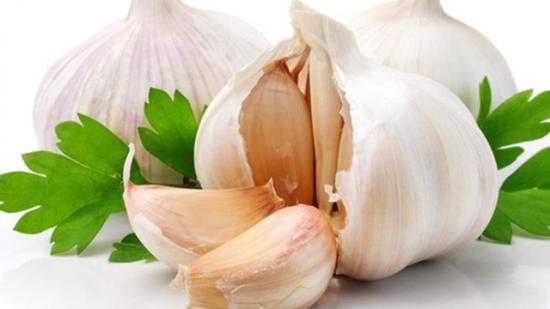
Common recipes include:
- Spraying a teaspoon of juice with tincture garlic and a glass of water;
- Another recipe for spraying: pour in a liter jar marigold, in the amount of 1/2 and let it brew for a day;
- You need to put finely chopped garlic or turpentine in a small container, put it in the pot next to the flower and cover the plant with a bag for three hours;
- Pour a liter of heated water over a teaspoon of freshly picked dandelion leaves or rhizomes and let it sit for three hours. After this, the infusion needs to be filtered and you can start spraying;
- If the plant has soft or pubescent leaves, it is recommended to spray it with a solution of mineral oils. You can prepare it by dissolving two drops of kerosene in water. After treatment, cover the plant with a bag for several days. After several days, wash off the solution. It is worth repeating three times after five days.
- Pour one liter of water over one hundred grams of dried tobacco and let it brew for a day. After this, the mixture must be filtered, diluted with a liter of water and treated with the flower.
- One teaspoon of dry tomato leaves should be poured into a glass of water and allowed to brew for three hours, then filtered, added water, bringing to a liter, and sprayed on the flower;
- Pour a teaspoon of freshly picked celandine flowers into a liter of water and let it brew for a day. Filter the infusion and process the flower.
- Wash the flower in the shower, wiping the leaves with a sponge and a solution of laundry soap. Do not wash off the soap, leave the plant like this for several days and cover the top with a bag. After this, wash off the soap and replant the plant.
Regardless of the treatment method, after the thrips are destroyed, it is recommended to replant the plant in new soil. In addition, it is worth thoroughly disinfecting, preferably boiling, the pot.
How to avoid thrips
The best way to get rid of pests is prevention.
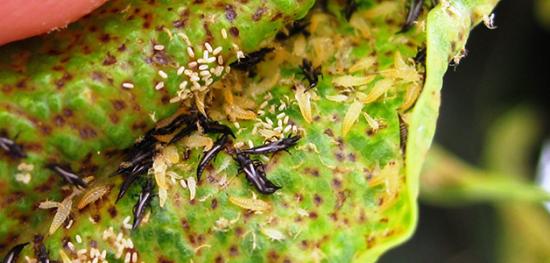
So, in order to avoid the appearance of pests, it is recommended:
- Ventilate the room every day;
- Monitor indoor air humidity levels;
- Inspect flowers regularly. This will help you notice the first signs of pest activity in time;
- Fertilize soil it is necessary, but do not overuse fertilizers with high percentages of nitrogen;
- Before planting, it is recommended to thoroughly sterilize the substrate components;
- Keep picked bouquets from the garden as far as possible from indoor ones plantsso that parasites cannot infect them. The same applies to new plants.
- It is not recommended to neglect the rules of prevention, since this can protect not only a specific flower, but all green spaces in the apartment.
Thrips are small but dangerous pests of many plants. In case of damage to indoor flowers, it is recommended not to delay in eliminating the problem.
If the danger is ignored, thrips can lead to the complete death of the plant.
About harmful insects and the fight against them in living quarters - watch the video:

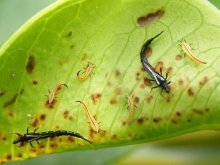
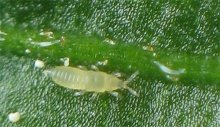
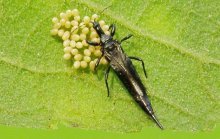
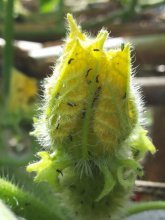
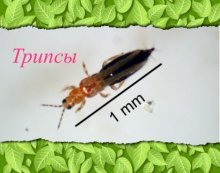
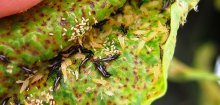


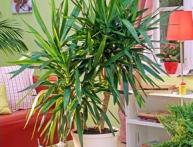
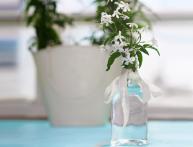
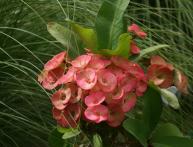
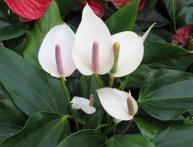


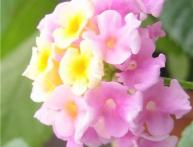
Comments
I am very familiar with these pests, as they are frequent guests in my garden. But I haven’t seen it on indoor plants yet. I will now inspect the flowers more carefully and act immediately if the plant is damaged by thrips.
Last week, two ficus flowers disappeared, a large-leaved ficus and a ficus with small leaves. I have never established the reason. They seemed to water it as it should, and they also fertilized it. But I might not have noticed such small bugs. Tomorrow I will examine other flowers with a magnifying glass.